For e-commerce business owners and web developers, understanding the fundamentals of information architecture is essential for creating a successful website. But what exactly is information architecture? In this blog post, we’ll dive deep into information architectures and explore how they can impact your site’s structure and search engine optimization (SEO) from an advanced-level professional perspective.
We’ll cover everything from creating an ideal information architecture to incorporating keywords in your category and product details pages. You’ll discover the significance of consumer exploration in forming a website’s structure, making content accessible to locate, and enhancing user experience.
By the end of this blog post, you will have gained valuable insights into building effective e-commerce websites with good information architectures that improve user experience and boost your search results rankings on Google’s algorithm. So let’s get started!

More Resources :
Tools for analyzing a Website’s IA
When it comes to website architecture, there are several tools available that can help you analyze and improve your site’s IA. Here are some of the most popular ones:
#1. Screaming Frog SEO Spider
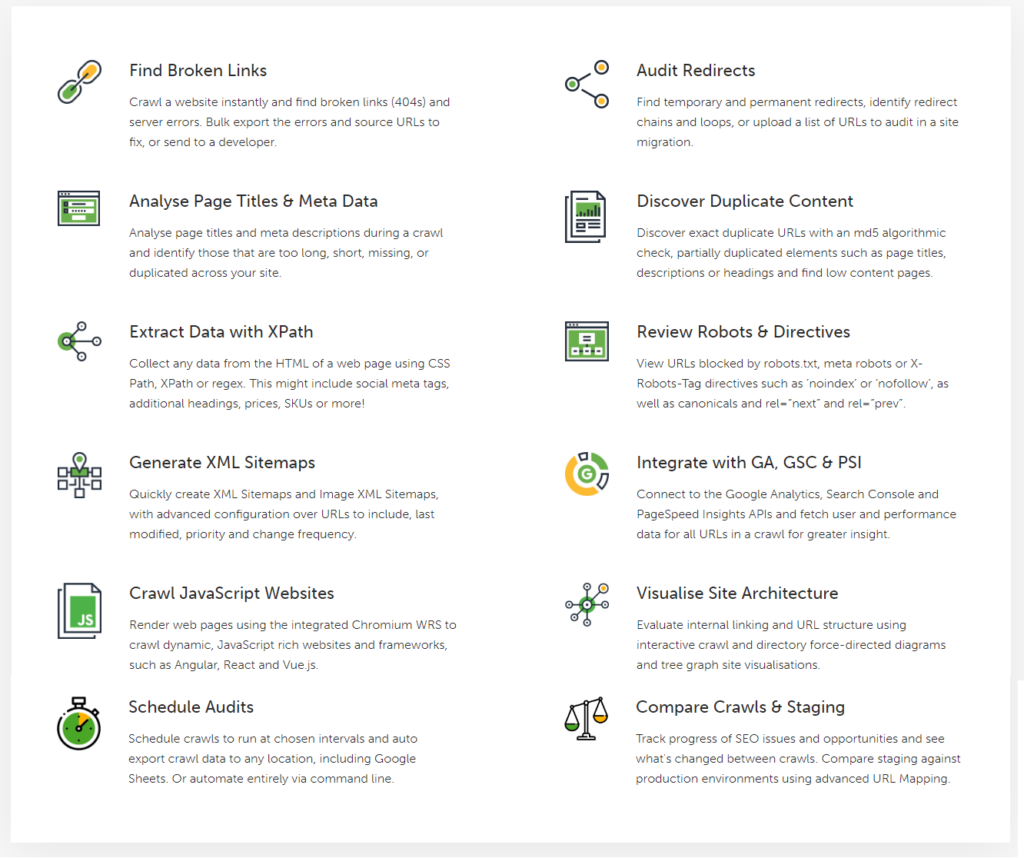
This tool crawls websites and identifies any issues with the structure or content. It provides detailed information about page titles, meta descriptions, headings, images, links, etc.
It also helps detect broken links and redirects and other technical problems that could affect your website’s performance in search engine results pages (SERPs).
#2. Google Search Console
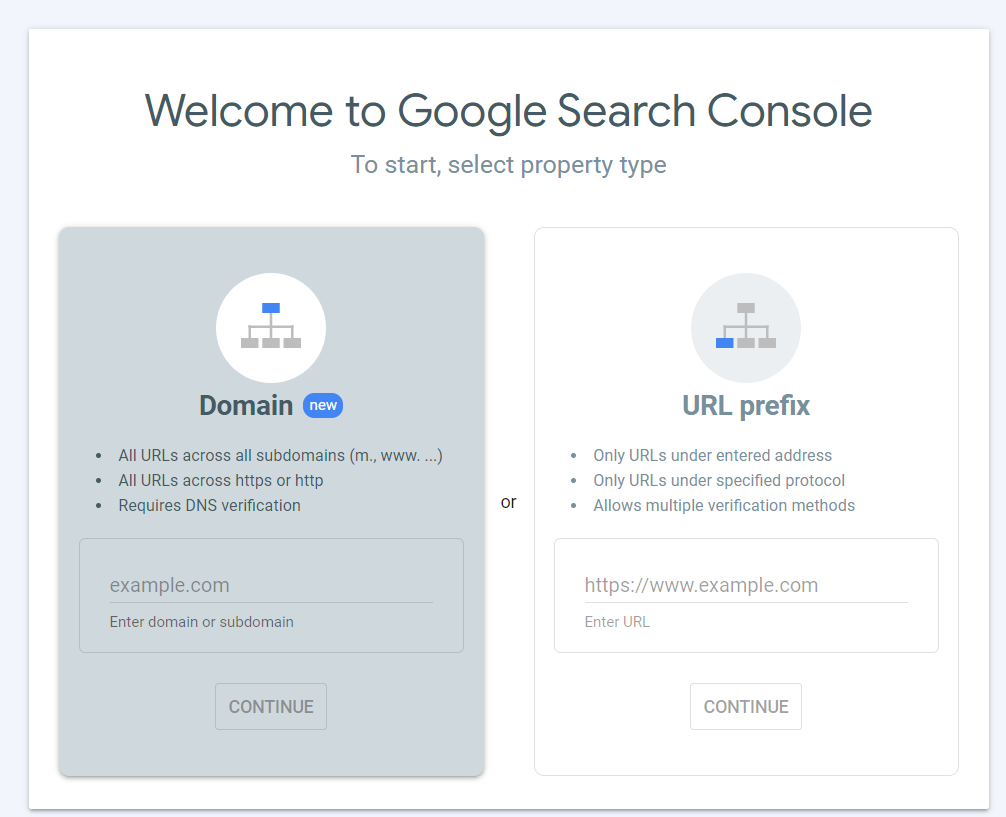
This free tool from Google allows webmasters to track their website’s performance in SERPs by providing data on impressions, clicks, and average position for each keyword query searched on Google.
Additionally, it provides insights into how users interact with your site, such as which pages they visit first or last when searching for specific terms related to your business or product offering.
#3. SEMrush Site Audit Tool
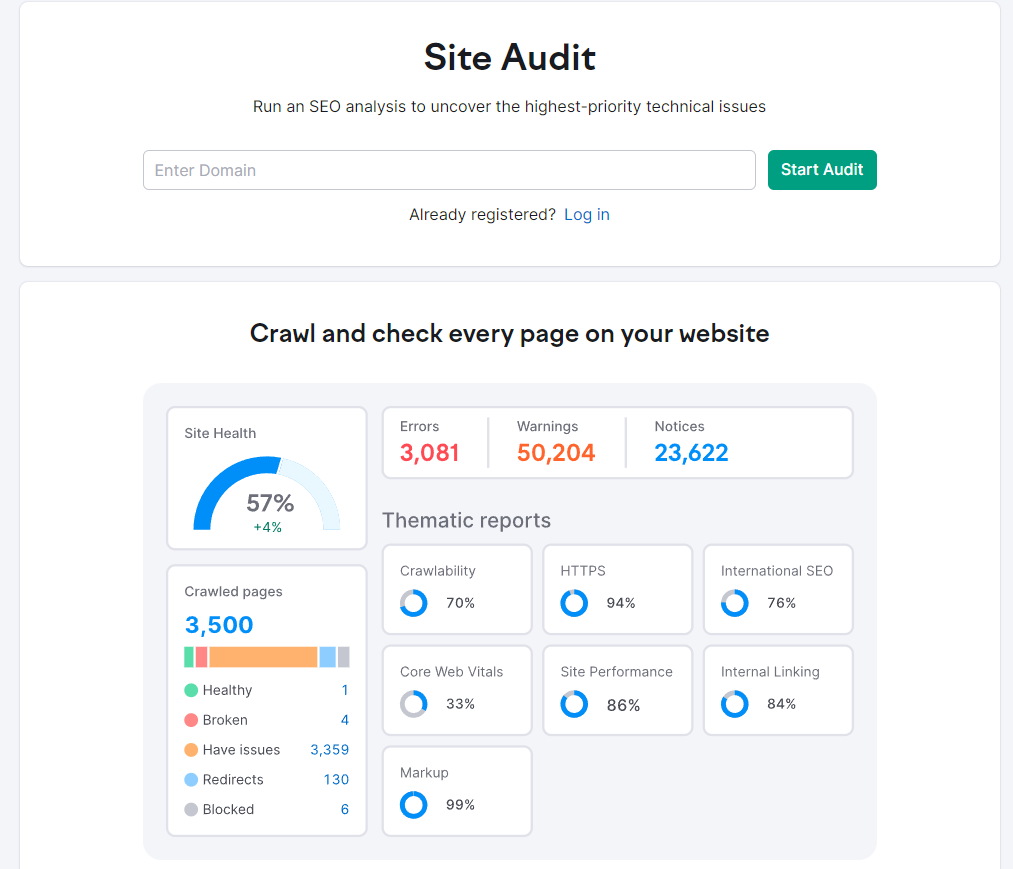
This powerful tool scans all aspects of a website, including its code quality, internal linking structure, and meta data optimization opportunities, so you can make improvements where needed quickly and easily without having to go through every single page yourself manually.
It also offers recommendations on optimizing individual pages for better rankings in SERPs based on factors like keyword density, title tag length, etc.
#4. Google Analytics

With this free service from Google, you can track user behavior across multiple devices. Hence, you know exactly what people do when they land on your website – whether they stay longer than expected or leave right away after visiting just one page – giving you valuable insight into potential areas of improvement within the overall user experience (UX) design process.
You can even set up custom reports tailored specifically towards tracking key metrics like bounce rate, time spent per page, conversion rates, etc., which will help inform decisions regarding changes that need to be made for visitors to have an enjoyable browsing experience while still achieving desired outcomes such as signing up for newsletters making purchases, etc.
#5. Hotjar
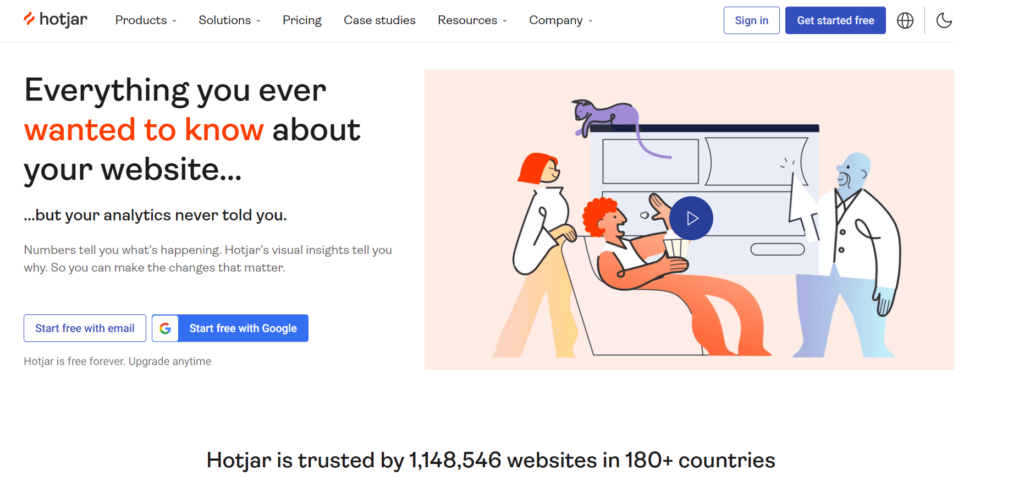
Hotjar is another great tool many professionals use when analyzing a website’s IA. It enables them to visualize visitor interactions via heatmaps, recordings & surveys, helping uncover any usability issues users may be experiencing during their journey through different parts of the site.
In addition, Hotjar also has features designed specifically towards improving UX, such as funnel analysis & AB testing capabilities, allowing webmasters to test out different versions of their sites before launching live, ensuring everything works properly once released into the public domain.
Optimizing E-commerce Sites
Following are the ways you should follow to optimize E-commerce sites.
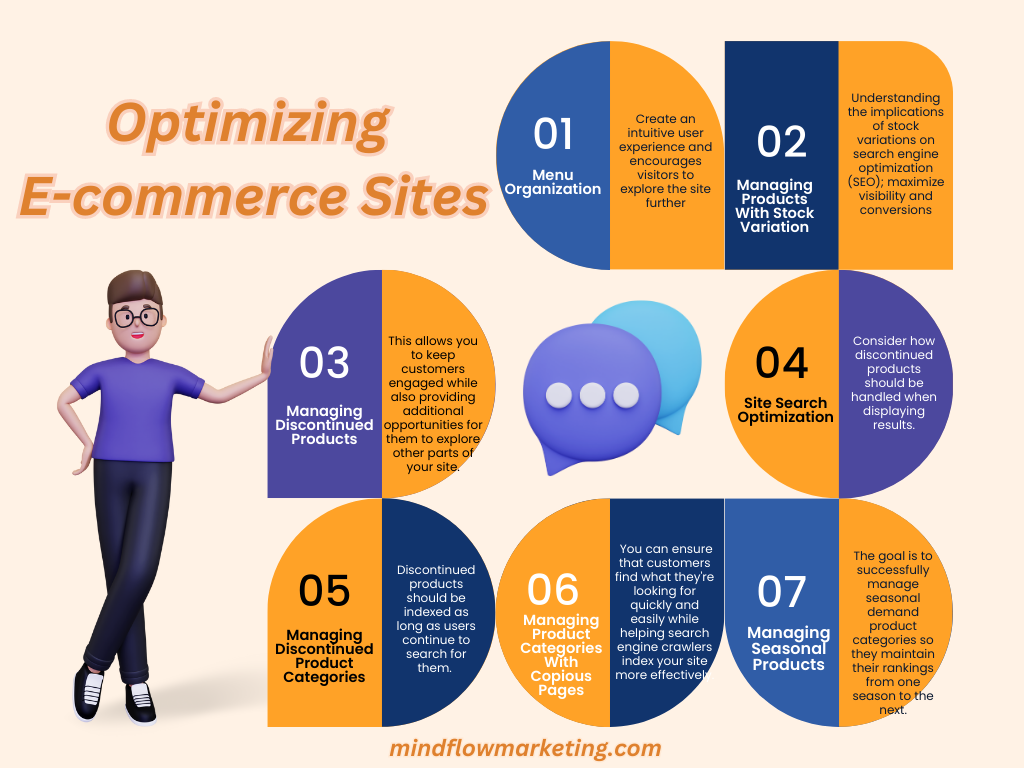
Menu Organization
Menu organization is a key factor when optimizing an e-commerce website. It helps to create an intuitive user experience and encourages visitors to explore the site further.
Properly organized menus can make it easier for customers to find what they want, increasing conversions and sales.
When designing a menu structure, it’s important to remember that users should be able to easily navigate through the different sections of your website without getting lost or overwhelmed.
To achieve this goal, you need to organize your menus logically so that users can quickly access the information they need without having to search too hard.
One way of organizing menus is by using categories and subcategories. This allows you to group related items so that users can quickly identify which section they need without having to scroll through all the options on one page.
For example, if you have an online store selling clothes, shoes, and accessories, you could create separate categories for each item type with subcategories, such as ‘men’s clothing’ or ‘women’s shoes, etc.
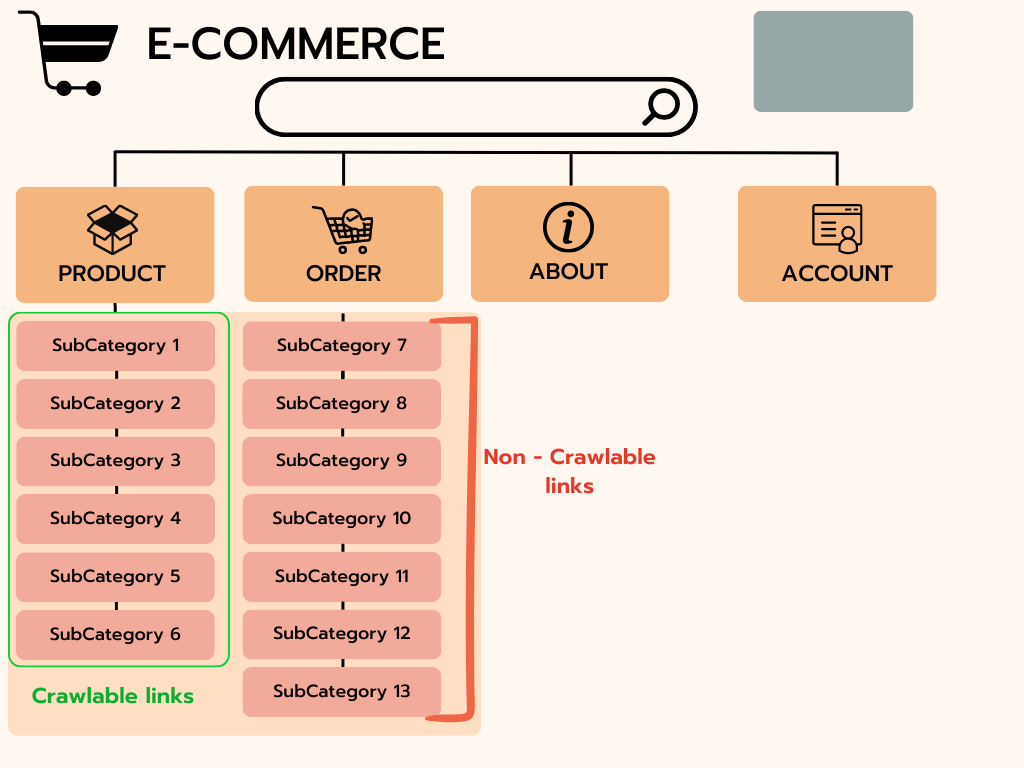
Another tip is creating drop-down menus instead of displaying all options on one page at once – this helps reduce clutter and simplify navigation.
Additionally, consider adding search bars or filters so customers can narrow down their results based on specific criteria such as price range, color, etc.
This will save time by allowing shoppers to quickly locate products relevant only to them rather than sifting through irrelevant ones before finding what they were looking for – like searching for a needle in a haystack!
Always remember that usability comes first when designing your menu structure – think about how people would naturally look for something rather than trying to force them into following certain steps; after all, no one likes being told how to do things!
Make sure everything flows logically from top-level categories right down into product pages while also ensuring there are plenty of opportunities where customers can go back up levels if needed – like breadcrumbs left behind in Hansel & Gretel’s fairy tale!
As previously demonstrated, we can improve navigation on our website by using menus structured by categories, subcategories, and filters. Filters are useful for assisting users in specifying additional product features, which are usually considered later once the user looks at products listed within a category or subcategory.
One decision we must make regarding SEO is whether or not to index a filter page. The decision will be based on the volume of searches and the availability of products.
Filters that correspond to popular search queries should generally be indexable. We must add crawlable links next to the checkboxes used to activate the desired filters to accomplish this. Crawlers can follow these links to indexable category pages and filters. For example, the “men’s” boots category, “leather” subcategory, and “brown” filters receive 10,000 monthly searches, indicating that they should be indexed.
Managing Products With Stock Variation
When it comes to managing products with stock variation, information architecture and SEO for e-commerce sites can be a tricky task.
Understanding the implications of stock variations on search engine optimization (SEO) to maximize visibility and conversions is important.
Product variations are differences between two or more products that affect pricing, availability, or functionality.
For example, if you sell t-shirts in different sizes and colors, then those would be considered product variations.
The challenge here is that each variation needs its unique page so that customers can find exactly what they’re looking for quickly and easily.
This also helps ensure your site has a good internal linking structure which is essential for SEO success.
When creating URLs for product pages with multiple variations, it’s important to use an organized structure so search engines can crawl them properly.
A common approach is to include the parent category followed by the product name followed by the specific variation like this:
Www.examplewebsitecategoryproductname-variation1. This makes it easier for both users and search engines alike as they will know exactly where they are going when clicking on a link from SERPs (Search Engine Results Pages).
Metadata such as titles, descriptions, keywords, etc., should be tailored specifically for each page depending on its content – don’t just copy-paste across all pages!
Each title should accurately reflect what’s contained within the page. If possible, try using words related directly to the product rather than generic terms like “buy now” or “shop now,” which won’t help your rankings!
Images play an important role in helping customers decide whether or not they want to purchase a particular item, but they also need to optimize correctly!
Ensure all images have descriptive alt tags containing relevant keywords; this will help improve your chances of appearing higher up in image searches – something many people need to remember when performing SEO tasks!
Additionally, ensure images are compressed properly before uploading them onto your website; otherwise, this could lead to slow loading times, negatively impacting user experience (UX).
Managing Discontinued Products
When it comes to managing discontinued products in SEO and information architecture for e-commerce sites, a few key considerations need to be taken into account.
Creating redirects from the old product page URL to an appropriate new location on your site is important.
This will help ensure that users who have bookmarked or shared the link previously can still find relevant content on your website. Additionally, this helps search engines understand what has happened with the product and appropriately direct users.
Suppose you need an appropriate replacement page for a discontinued product. In that case, it’s best practice to create a custom 404 page that informs visitors of why they reached this page and provides them with other options, such as similar products or related categories where they may find what they are looking for.
This allows you to keep customers engaged while also providing additional opportunities for them to explore other parts of your site.
Site Search Optimization
When optimizing site search results pages, it’s important to consider how discontinued products should be handled when displaying results.
For example, should the result still appear if someone searches for a specific item that is no longer available? Or should it be excluded so customers save time clicking through only to discover the item isn’t available?
Depending on how many items you carry and their availability status (discontinued vs. active), different approaches may make sense here depending on user experience goals versus business objectives like upselling or cross-selling opportunities.
Lastly, metadata & titles play an important role in helping search engines better understand what has happened with these pages over time – especially when combined with redirects & 404 pages mentioned above – so ensuring these elements accurately reflect changes in product availability is essential too!
It is critical to pay attention to the meta tags and descriptions connected with each page; revising these components can be of great assistance in aiding search engines to comprehend better what type of content is included on every URL.
Managing Discontinued Product Categories
Discontinued products should be indexed as long as users continue to search for them. Even if a product is no longer manufactured, users will continue to search for it for some time. We recommend that page be kept indexed for as long as the term for which it is optimized has search potential.
As in the previous case, because these discontinued products will have a lower conversion rate than the rest, we recommend linking them at the bottom of their category pages, prioritizing current products in stock.
To redirect the user to the discontinued product and avoid losing the conversion, the product sheets for discontinued products should include references to the new model or a substitute for the obsolete one.
We recommend creating a 301 redirect to the page of a new model or a substitute product, if one exists, once the search volume of a discontinued product decreases.
Remember to crawl the entire website to see if any links point to the obsolete product sheet that needs updating. Links from blog posts or other types of content, for example. This way, any residual popularity gathered by the removed item will be concentrated in the URL of the substitute product.
Managing Product Categories With Copious Pages
SEO and information architecture are key when managing product categories with copious pages, and understanding the importance of organizing your content in a way that makes sense for users and search engines alike is important.
By doing so, you can ensure that customers find what they’re looking for quickly and easily while helping search engine crawlers index your site more effectively.
One of the best ways to do this is by creating logical category structures within your website. This means grouping related products under their subcategories or sections on the page.
For example, if you sell clothing items such as shirts, pants, skirts, etc., each type should have its section on the page rather than all being lumped together in one big list.
Doing this will make it easier for customers to find what they’re looking for without scrolling through an endless list of products.
It’s also important to use descriptive titles when labeling each category or subcategory so that users know exactly what type of products are included at a glance.
Using generic terms like “clothing” isn’t very helpful since it doesn’t give any indication as to which types of clothing items are available within that particular section – instead, try using something more specific like “women’s blouses & tops” or “men’s dress pants.” This will help customers narrow their choices faster and improve their overall user experience (UX).
Another thing you should keep in mind when dealing with large amounts of content is pagination – splitting up long lists into multiple pages rather than displaying everything on one single page helps reduce loading times and improves navigation around your site as well as making sure no single page becomes too cluttered with information overload!
Managing Seasonal Products
There are online shops, specifically those related to fashion, whose product catalogs change dramatically from winter to summer:
In this case, the goal is to successfully manage seasonal demand product categories so they maintain their rankings from one season to the next.
We can prioritize one in the menu when we have seasonal product ranges.
We can avoid deindexing categories if we keep these sections linked from the “Outlet” or “Clearance” areas with some product references until the next season. Although it is normal for products to last in the following season, most categories will remain from one season to the next. We must focus our efforts on these pages to avoid losing rankings.
Tips for Information Architecture and SEO for E-commerce Sites
To ensure that search engines can easily crawl through your site’s content, have a clear hierarchy of categories and subcategories in place so users can quickly find what they are looking for and stay aware of the options.
Additionally, use keywords in your category titles whenever possible, as this will help boost your rankings on SERPs (Search Engine Results Pages).
It’s best practice to keep URLs short and descriptive with relevant keywords included if possible – this helps search engine crawlers understand the page content better and makes them easier for customers to remember, increasing click-through rates from organic searches!
Additionally, avoid using numbers or special characters like underscores (_) in URLs, as these may confuse crawlers and customers.
Breadcrumb navigation is another great tool that helps improve the user experience while boosting SEO performance on e-commerce sites – it allows visitors to quickly see where they are within the website hierarchy while providing additional internal links, increasing visibility on SERPs!
This type of navigation should be used sparingly, though; only include breadcrumbs when necessary to avoid overwhelming users with too much information at once or creating duplicate content issues due to multiple pages linking back and forth between each other unnecessarily.
Internal linking strategies are essential for any successful e-commerce site looking to maximize its SEO potential – this means strategically placing links throughout different pages on the website that point back towards related products, services, or even just general blog posts about topics related but not necessarily directly connected with what’s being sold online!
Doing so will help spread link juice across all site areas, ultimately leading to more traffic from organic searches over time – plus, it gives visitors more opportunities to explore without having to leave the page they’re currently viewing first!
FAQs About Information Architecture and SEO for E-Commerce Sites
Conclusion
Realizing the significance of data architecture and SEO for e-commerce sites is essential to maximize your website’s user experience, make it navigable, and boost search engine rankings.
By applying mindful planning and focusing on the finer points, an efficient IA system can be crafted to make it simpler for shoppers to locate what they desire on your website while ensuring maximum visibility from possible customers searching online.
Maximize your e-commerce site’s visibility with expert advice on search engine optimization, site architecture, web usability, and user experience. Contact us today to get started!